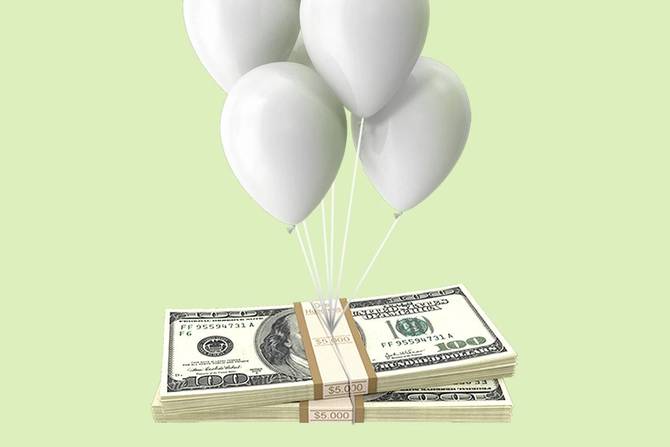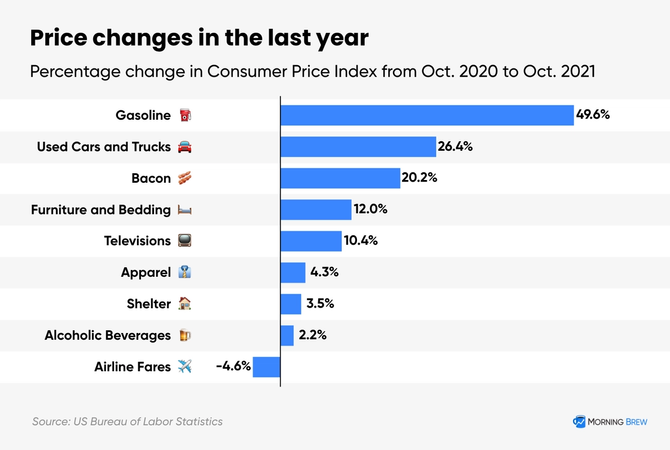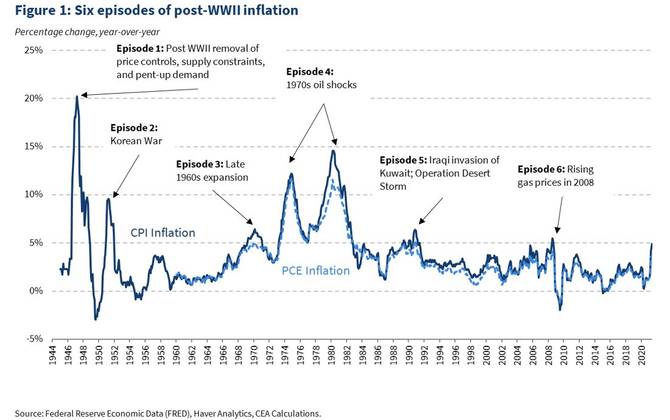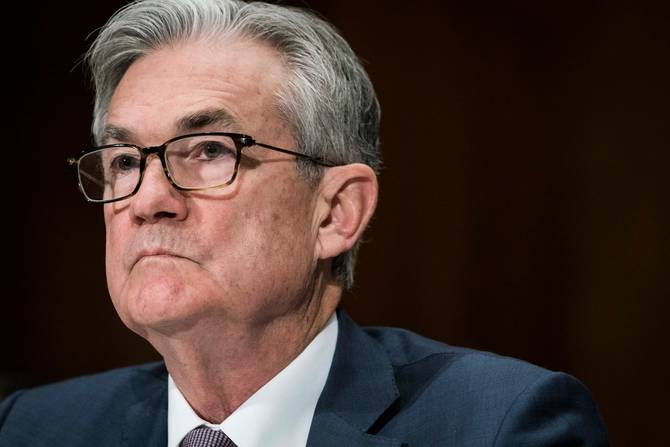Good morning. We hope this email finds you exceedingly full, a little drowsy, and in the company of friends, family, and abundant leftovers. Today's Brew is a little different than usual. Instead of doing a recap of yesterday's news, which admittedly we didn't pay much attention to, we're going to do a deep dive on the economic topic du jour: inflation. We'll explore why inflation is actually bad, how we got into this mess, what the Fed can do, and more. Hope you enjoy it. Reminder: We'll be off Saturday and Sunday as well to spend quality time with the fam. But don't worry, the Brew will be back in your inbox with regularly scheduled programming on Monday. —Neal Freyman | | | READ THIS TO REMAIN A SUBSCRIBER Want to keep receiving Morning Brew? Clicking on newsletter links is the only way for us to know you are reading (and enjoying) Morning Brew. If you don't click by next month, you will stop receiving this newsletter. Click here to let us know that you're still an active subscriber. Thanks! | | | Francis Scialabba The funny thing about the current inflation scare is...it all happened so abruptly. As the first Covid wave ripped through the US last spring, more than 20 million Americans lost their jobs and the country entered its worst recession in history. With GDP tumbling 31.4% in Q2 2020, the last thing worrying economists was surging prices. After all, for a brief moment, oil prices had just plummeted below $0. But it turns out the worst recession in US history was also the shortest—by far. Thanks to government stimulus to the tune of nearly $6 trillion, many Americans were able to weather the storm and, flush with cash but restricted to their homes, went full Extreme Makeover. Consider this: Consumer spending on goods was nearly 26% higher in August 2021 than in January 2019. Demand is just one element of the price equation And while demand for goods skyrocketed, supply was not ready to meet it. For a number of reasons—frequent Covid lockdowns in Asia, widespread labor shortages, poor planning—producers were unable to make and ship enough goods to satisfy the ravenous appetites of consumers. So given this severe demand–supply imbalance, prices started to climb, slowly at first in late 2020 but then really picking up steam as the ball dropped on 2021. The consumer price index, which monitors the prices of a basket of consumer goods, grew 1.7% annually in February but by May had jumped 5%. The higher inflation readings in spring 2021 were attributed to a few items that had an outsized impact on rising prices. You might remember all the fuss about used cars, which accounted for more than one-third of the monthly price increases in June. This weird dynamic lent ammo to the officials, Fed Chair Jerome Powell included, who argued that inflation was "transitory" and likely to subside once a few pandemic wrinkles had been ironed out. But Team Transitory is on the back foot right now. This fall, inflation has spread from used cars and energy to items across the economy, from rents to food to apparel. At the same time, wages are surging, which is great for workers but also contributes to inflation, as companies must raise prices on their products to offset higher labor costs. In October, consumer prices rose at their fastest pace in 31 years, and economists are still debating when inflation will peak. So that's how we got here. | | | Francis Scialabba; repurposed from Axios | | Not a dumb question at all. In fact, many economists have trouble explaining exactly why inflation is so harmful. Let's start here: Inflation is good, when it grows slowly. The Fed targets a 2% rate of inflation over the long run, allowing for a few temporary blips. Moderate inflation is a sign of a healthy economy. When consumers expect prices to increase in the future, they want to buy goods now. Producers take this demand as a sign that they should make more goods, hire more labor, make more investments, etc., which generates a "virtuous" cycle of growth. - And while inflation does mean higher prices for consumers, it also leads to higher salaries, blunting its effects on your wallet.
- Last quarter, wages jumped the most in 20 years of record-keeping.
Okay, so when is inflation bad? When higher prices outstrip wage growth, that's bad, obviously, because your standard of living falls. Inflation is especially harmful to folks whose income is more fixed—like many seniors. Inflation, when left unchecked, can also escalate quickly. As we mentioned before, inflation messes with the human brain. As workers grow concerned about rising prices, they push for higher wages, which in turn raises costs for businesses, which forces them to hike prices, and...lather, rinse, repeat. This is called the "wage–price spiral," and it led to consumer prices rising more than 14% annually in 1980. Finally, higher inflation is bad because it typically doesn't end well. In a bid to stop the spiraling inflation of the 1970s, then-Fed Chair Paul Volcker cranked up interest rates to slow down the economy, a necessary action that inevitably resulted in a punishing recession. As we'll discuss a little later, current Fed leaders have a tough task ahead of them in trying to rein in inflation without hitting the brakes on economic growth. | | | | You probably know it's Black Friday. If you don't, congrats on living in a remote cabin on the Scottish moors. Over the next couple days, a lot of deals, bargains, and sales are going to be thrown in your face. But none of those deals can top what this humble advertisement is offering you: peace of mind. Yes, SimpliSafe is offering you a discount on something you couldn't put a price on in the first place. Today, you can take 50% off a custom SimpliSafe home security system. Plus they're throwing in an HD indoor SimpliCam for free. SimpliSafe's system provides you and your family with robust, reliable home security without the hassle or expense of old-school security brands. With only 30 minutes of set-up, you'll blanket every room, window, and door with sensors and cameras that detect emergencies and dispatch police or first responders fast. Buy peace of mind for a steep discount today. | | | The White House This chart from the White House shows the six major inflationary episodes following World War II, as measured by the consumer price index (CPI) and personal consumption expenditures (PCE), which is the Fed's preferred inflation gauge. Let's briefly explore each episode. 1946–1948: In the years following WWII, inflation jumped more than 20% due to the scrapping of wartime price controls, surging consumer demand, and supply shortages. 1950–1951: The Korean War spurred a rush for goods, while some production pivoted back to military material. 1969–1971: GDP growth averaged a whopping 4.8% during this period of economic expansion, which also resulted in higher inflation. 1973–1982: Two shocks to energy markets (an OPEC oil embargo and conflicts in the Middle East) led to the longest stretch of inflation in US history. 1989–1991: Another war in the Middle East, the Gulf War, caused gas prices to spike. 2008: Oil prices jumped to $140/barrel in July 2008, double what they had been a year earlier. What can we learn? While each inflationary period has its own unique characteristics, White House economists argue that our current situation most closely parallels the post-WWII bump in prices, which resulted from pent-up consumer demand and supply chain disruptions, and not 1970s-style inflation, which stemmed from extraordinary shocks to energy markets. | | | Sarah Silbiger/Getty Images With inflation at its highest level since 1990, pressure is mounting on the central bank to channel Mr. Freeze and cool down prices. What would that look like? Winding down its pandemic-era stimulus measures more aggressively. The central bank has already started to taper the $120 billion/month in bond purchases it began last summer, but some economists, such as Harvard's Jason Furman, think the Fed should speed up the wind-down in a bid to stop price growth in its tracks. - Some Fed officials agree. St. Louis Fed President James Bullard said recently, "It makes sense to try to move a little bit more hawkishly here and try to manage the inflation risk."
- In the minutes from the last Fed meeting, officials said they would "not hesitate" to address inflation through tools like rate hikes.
But...it's not totally that simple. Remember, the Fed changed its policy framework in 2020 that allows it to overshoot its 2% inflation target in the short term to achieve "maximum employment," the idea that anyone who is willing and able to work has the opportunity to get a job. And while the unemployment rate has dropped more quickly than expected (it's down to 4.6% from a 14.7% peak in May 2020), the economy remains 5 million jobs short of its pre-pandemic levels. Jerome Powell does not want to slow down economic growth to such an extent that people stop getting hired. Looking ahead...the Fed meets in December for the final time in 2021. The big thing to watch for is whether Powell decides to reduce those bond purchases more quickly in order to quell inflation fears. | | A few reads that have nothing to do with inflation—a true "what else is brewing." | | | | Lots of things cost more because of inflation. But today, the most important thing of all costs less. SimpliSafe's Black Friday sale is on, meaning all their home security systems are 50% off and they'll throw in a free indoor camera. Protect your family with the easy-to-install system that experts—and more importantly, lots of normal people—love. Buy SimpliSafe for 50% off today. | | | The first ever Morning Brew Holiday Sale is happening now. For a limited time, get free shipping when you spend at least $75 and get a free Morning Brew backpack when you spend at least $100. Plus, check out our limited-edition holiday drops. Shop now | | The only trivia we could possibly do for an inflation newsletter is a game in the spirit of The Price Is Right. So, we went to Walmart.com to look up the prices of a few items. How close can you get without going over? - 12 pack of Gatorade Zero (variety pack)
- Clorox disinfecting wipes, 75 count
- Lego Star Wars Imperial Light Cruiser kit (1,336 pieces)
- Xbox Series X video game console
- Canon wired all-in-one color inkjet printer
| | | 1. 12 pack of Gatorade Zero (variety pack) = $16.60
2. Clorox disinfecting wipes, 75 count = $4.48
3. Lego Star Wars Imperial Light Cruiser kit (1,336 pieces) = $147.00
4. Xbox Series X video game console = $499.00
5. Canon wired all-in-one color inkjet printer = $40.00 | | HOW WAS TODAY'S NEWSLETTER? | | | Written by Neal Freyman Was this email forwarded to you? Sign up here. WANT MORE BREW? Industry news, with a sense of humor → - Emerging Tech Brew: AI, crypto, space, autonomous vehicles, and more
- HR Brew: analysis of the employee-employer relationship
- Marketing Brew: the buzziest happenings in marketing and advertising
- Retail Brew: retail trends from DTC to "buy now, pay later"
Tips for smarter living → - Money Scoop: your personal finance upgrade
- Sidekick: lifestyle recs from every corner of the internet
 Podcasts → Business Casual and Founder's Journal Podcasts → Business Casual and Founder's Journal Accelerate Your Career → - MB/A: virtual 8-week program designed to broaden your skill set
| ADVERTISE // CAREERS // SHOP // FAQ
Update your email preferences or unsubscribe here.
View our privacy policy here.
Copyright © 2021 Morning Brew. All rights reserved.
22 W 19th St, 8th Floor, New York, NY 10011 | |













No comments:
Post a Comment